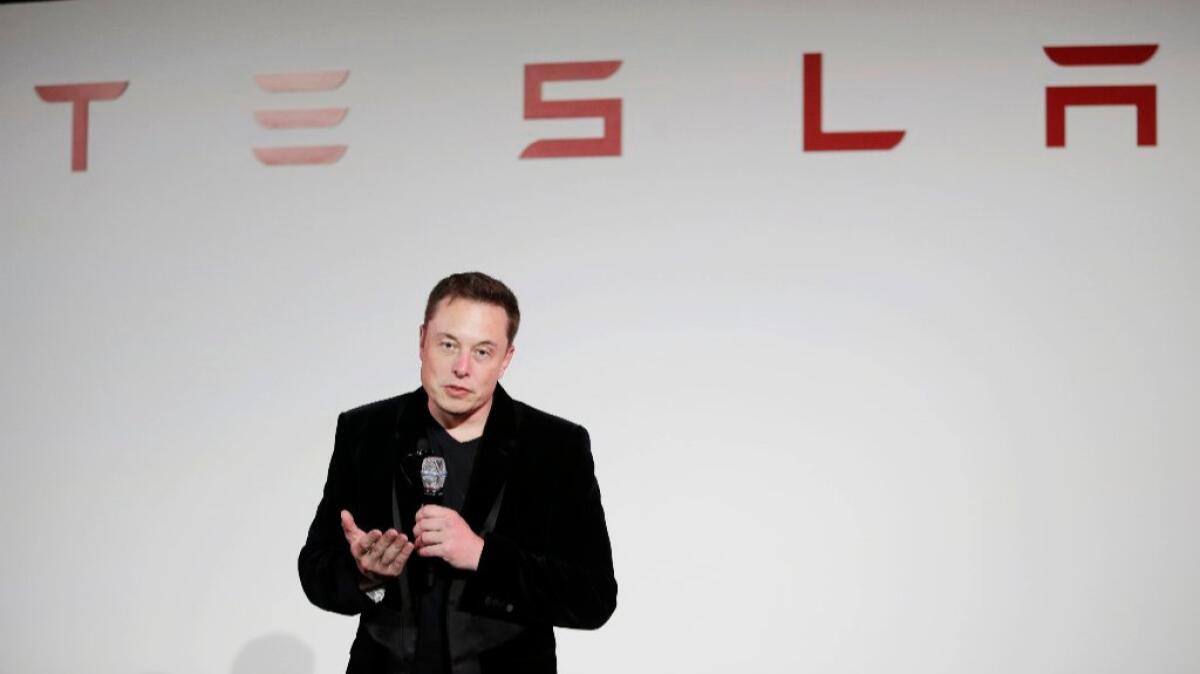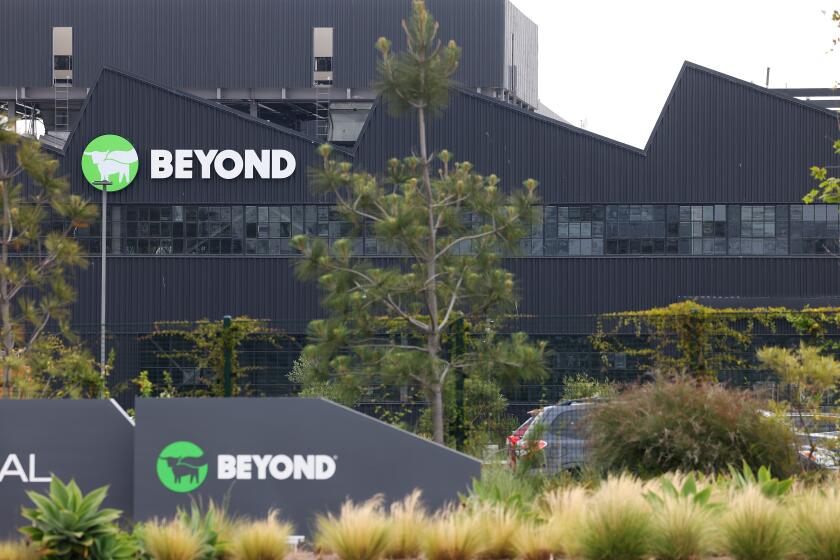Autopilot changes could boost confidence in Tesla and better adoption of driverless tech, analysts say

Tesla Motors CEO Elon Musk, shown in 2015, said last week was “one of the worst weeks ever, really.”
Tesla’s plan to upgrade the controversial Autopilot feature on its electric cars drew positive reviews Monday from some analysts, who say the changes will be better for safety and for the company’s future.
The improvements, following the fatal crash of a driver using Autopilot this spring, were unveiled Sunday by Tesla Motors Inc. Chief Executive Elon Musk. The new Autopilot will rely primarily on radar — and not just cameras — to help the car “see” better and avoid collisions.
“This is something that needed to happen from Tesla,” said Jessica Caldwell, senior analyst with the automotive site Edmunds.com. “That accident had to be addressed.”
The crash is being investigated by federal traffic safety regulators, and there have been other accidents involving Tesla’s Autopilot feature, all of which have heightened scrutiny of semi-autonomous driving technology.
Palo Alto-based Tesla has always maintained that the technology is not foolproof and requires the driver to be prepared to take over at any time.
But Musk said the feature now would “make much more effective use of radar” to help guide Tesla’s cars and would provide more safeguards to ensure drivers remain alert at the wheel when Autopilot is engaged.
The feature also includes cameras and sensors. The enhancements are expected to be rolled out within the next two weeks.
Caldwell said “radar is used quite widely in the auto industry,” especially in the march toward self-driving cars, “but I would say not to the degree that Tesla is using it in their system.”
The fatal crash occurred when a Tesla Model S driving on Autopilot in Florida in May slammed into a big rig after apparently failing to distinguish between the white truck and the bright sky behind it.
No car can provide perfect safety, but the enhancements mean Tesla’s mainstay Model S sedan and Model X sport utility vehicle will be “by far the safest car on the road,” Musk said Sunday.
Rob Enderle, president of the technology strategy firm Enderle Group, said Tesla’s changes illustrated that “they remain ahead” of the industry in semi-autonomous driving features for existing production cars.
“Tesla has the most advanced automated cruise-control system on the market” and the improvements “make the system better,” Enderle said.
Wall Street welcomed Tesla’s announcement, with Tesla’s stock gaining $3.83, or 2%, to $198.30 a share Monday.
That was one positive note after Musk said he and his companies suffered “one of the worst weeks ever.” Musk also is chief executive of rocket maker SpaceX and of solar-power provider SolarCity Corp.
Musk originally said he would announce the Autopilot changes Aug. 31. But the day ended with no word, and the next morning a SpaceX rocket exploded on the launchpad, putting the Autopilot news on hold longer.
That added to other concerns about Musk’s empire, including Tesla’s plan to acquire publicly held SolarCity for $2.6 billion in Tesla stock, cash-flow concerns at Tesla and Solar City, and the automaker’s plan to roll out a new car – the more affordable Model 3 that starts at $35,000 – starting late 2017.
However, SolarCity announced Monday that it raised an additional $305 million from investors to help its financing needs. In response, SolarCity’s stock jumped 6% on Monday, gaining $1.03 to $17.80 a share.
Musk said Sunday another “quite significant” upgrade to Autopilot was with its “Autosteer” feature.
Among other things, if a driver ignores Autosteer’s audible alarm to take control of the wheel more than three times in an hour, “the driver will have to park the car and restart in order to enable Autosteer [again],” he said. Otherwise the car will gradually come to a stop itself.
“Expert users” of the Autosteer feature were more likely to be in Autopilot-related accidents because “they get very comfortable with it and repeatedly ignore the car’s warnings,” Musk said. “We really want to avoid that situation.”
James Albertine, an analyst with Consumer Edge Research, said in a note to clients that improving Autopilot showed Tesla and Musk were “now recognizing driver awareness” when using the feature, “which sadly was lacking as it relates to prior high-profile Autopilot-related accidents.”
“We think public relations will be increasingly important in generating confidence and ultimately adoption of driverless technologies,” Albertine wrote.
Caldwell agreed, saying that as Tesla “moves toward the rollout of the Model 3, they have to get people confident in their brand.”
The Model 3 is “Tesla’s future – a high-volume vehicle – and what they do between now and the launch of the Model 3 is important because they need to show the buying public they’re fixing things,” she said.
For more business news, follow James F. Peltz on Twitter: @PeltzLATimes
ALSO
How to avoid hiring a Madoff-like financial advisor
Democratic senators want hearings on Wells Fargo’s aggressive sales tactics
Closing of ITT Tech and other for-profit schools leaves thousands of students in limbo
More to Read
Inside the business of entertainment
The Wide Shot brings you news, analysis and insights on everything from streaming wars to production — and what it all means for the future.
You may occasionally receive promotional content from the Los Angeles Times.











